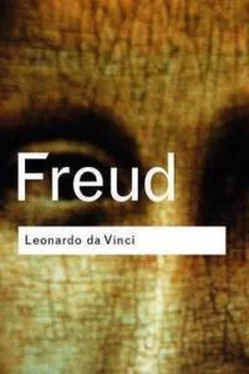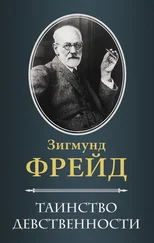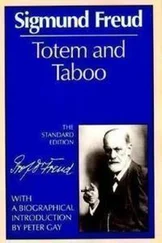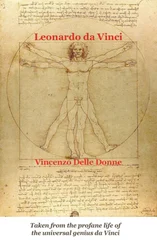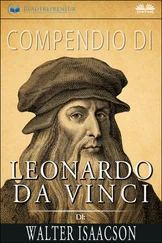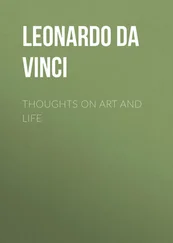"Protogen che il penel di sue pitture
Non levava, agguaglio il Vinci Divo,
Di cui opra non è finita pure."
The slowness with which Leonardo worked was proverbial. After the most thorough preliminary studies he painted The Holy Supper for three years in the cloister of Santa Maria delle Grazie in Milan. One of his contemporaries, Matteo Bandelli, the writer of novels, who was then a young monk in the cloister, relates that Leonardo often ascended the scaffold very early in the morning and did not leave the brush out of his hand until twilight, never thinking of eating or drinking. Then days passed without putting his hand on it, sometimes he remained for hours before the painting and derived satisfaction from studying it by himself. At other times he came directly to the cloister from the palace of the Milanese Castle where he formed the model of the equestrian statue for Francesco Sforza, in order to add a few strokes with the brush to one of the figures and then stopped immediately. [6] W. v. Seidlitz. Leonardo da Vinci, der Wendepunkt der Renaissance, 1909, Bd. I, p. 203.
According to Vasari he worked for years on the portrait of Monna Lisa, the wife of the Florentine de Gioconda, without being able to bring it to completion. This circumstance may also account for the fact that it was never delivered to the one who ordered it but remained with Leonardo who took it with him to France. [7] W. v. Seidlitz, l. c. Bd. II, p. 48
Having been procured by King Francis I, it now forms one of the greatest treasures of the Louvre.
When one compares these reports about Leonardo's way of working with the evidence of the extraordinary amount of sketches and studies left by him, one is bound altogether to reject the idea that traits of flightiness and unsteadiness exerted the slightest influence on Leonardo's relation to his art. On the contrary one notices a very extraordinary absorption in work, a richness in possibilities in which a decision could be reached only hestitatingly, claims which could hardly be satisfied, and an inhibition in the execution which could not even be explained by the inevitable backwardness of the artist behind his ideal purpose. The slowness which was striking in Leonardo's works from the very beginning proved to be a symptom of his inhibition, a forerunner of his turning away from painting which manifested itself later. [8] W. Pater. The Renaissance, p. 107, The Macmillan Co., 1910. "But it is certain that at one period of his life he had almost ceased to be an artist."
It was this slowness which decided the not undeserving fate of The Holy Supper. Leonardo could not take kindly to the art of fresco painting which demands quick work while the background is still moist, it was for this reason that he chose oil colors, the drying of which permitted him to complete the picture according to his mood and leisure. But these colors separated themselves from the background upon which they were painted and which isolated them from the brick wall; the blemishes of this wall and the vicissitudes to which the room was subjected seemingly contributed to the inevitable deterioration of the picture. [9] Cf. v. Seidlitz, Bd. I die Geschichte der Restaurations—und Rettungsversuche.
The picture of the cavalry battle of Anghiari, which in competition with Michelangelo he began to paint later on a wall of the Sala de Consiglio in Florence and which he also left in an unfinished state, seemed to have perished through the failure of a similar technical process. It seems here as if a peculiar interest, that of the experimenter, at first reënforced the artistic, only later to damage the art production.
The character of the man Leonardo evinces still some other unusual traits and apparent contradictions. Thus a certain inactivity and indifference seemed very evident in him. At a time when every individual sought to gain the widest latitude for his activity, which could not take place without the development of energetic aggression towards others, he surprised every one through his quiet peacefulness, his shunning of all competition and controversies. He was mild and kind to all, he was said to have rejected a meat diet because he did not consider it just to rob animals of their lives, and one of his special pleasures was to buy caged birds in the market and set them free. [10] Müntz. Léonard de Vinci, Paris, 1899, p. 18. (A letter of a contemporary from India to a Medici alludes to this peculiarity of Leonardo. Given by Richter: The literary Works of Leonardo da Vinci.)
He condemned war and bloodshed and designated man not so much as the king of the animal world, but rather as the worst of the wild beasts. [11] F. Botazzi. Leonardo biologo e anatomico. Conferenze Florentine, p. 186, 1910.
But this effeminate delicacy of feeling did not prevent him from accompanying condemned criminals on their way to execution in order to study and sketch in his notebook their features, distorted by fear, nor did it prevent him from inventing the most cruel offensive weapons, and from entering the service of Cesare Borgia as chief military engineer. Often he seemed to be indifferent to good and evil, or he had to be measured with a special standard. He held a high position in Cesare's campaign which gained for this most inconsiderate and most faithless of foes the possession of the Romagna. Not a single line of Leonardo's sketches betrays any criticism or sympathy of the events of those days. The comparison with Goethe during the French campaign cannot here be altogether rejected.
If a biographical effort really endeavors to penetrate the understanding of the psychic life of its hero it must not, as happens in most biographies through discretion or prudery, pass over in silence the sexual activity or the sex peculiarity of the one examined. What we know about it in Leonardo is very little but full of significance. In a period where there was a constant struggle between riotous licentiousness and gloomy asceticism, Leonardo presented an example of cool sexual rejection which one would not expect in an artist and a portrayer of feminine beauty. Solmi [12] E. Solmi: Leonardo da Vinci. German Translation by Emmi Hirschberg. Berlin, 1908.
cites the following sentence from Leonardo showing his frigidity: "The act of procreation and everything that has any relation to it is so disgusting that human beings would soon die out if it were not a traditional custom and if there were no pretty faces and sensuous dispositions." His posthumous works which not only treat of the greatest scientific problems but also comprise the most guileless objects which to us do not seem worthy of so great a mind (an allegorical natural history, animal fables, witticisms, prophecies), [13] Marie Herzfeld: Leonardo da Vinci der Denker, Forscher und Poet. Second edition. Jena, 1906.
are chaste to a degree—one might say abstinent—that in a work of belle lettres would excite wonder even to–day. They evade everything sexual so thoroughly, as if Eros alone who preserves everything living was no worthy material for the scientific impulse of the investigator. [14] His collected witticisms—belle facezie,—which are not translated, may be an exception. Cf. Herzfeld, Leonardo da Vinci, p. 151.
It is known how frequently great artists found pleasure in giving vent to their phantasies in erotic and even grossly obscene representations; in contradistinction to this Leonardo left only some anatomical drawings of the woman's internal genitals, the position of the child in the womb, etc.
It is doubtful whether Leonardo ever embraced a woman in love, nor is it known that he ever entertained an intimate spiritual relation with a woman as in the case of Michelangelo and Vittoria Colonna. While he still lived as an apprentice in the house of his master Verrocchio, he with other young men were accused of forbidden homosexual relations which ended in his acquittal. It seems that he came into this suspicion because he employed as a model a boy of evil repute. [15] According to Scognamiglio (l. c. p. 49) reference is made to this episode in an obscure and even variously interpreted passage of the Codex Atlanticus: "Quando io feci Domeneddio putto voi mi metteste in prigione, ora s'io lo fo grande, voi mi farete peggio."
When he was a master he surrounded himself with handsome boys and youths whom he took as pupils. The last of these pupils Francesco Melzi, accompanied him to France, remained with him until his death, and was named by him as his heir. Without sharing the certainty of his modern biographers, who naturally reject the possibility of a sexual relation between himself and his pupils as a baseless insult to this great man, it may be thought by far more probable that the affectionate relationships of Leonardo to the young men did not result in sexual activity. Nor should one attribute to him a high measure of sexual activity.
Читать дальше
